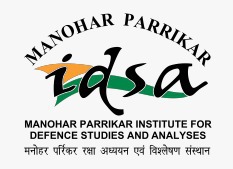Pathways to Self-Reliance in Combat Aircraft :A Strategic Roadmap for India’s Aeronautical Sector
- October-December 2024 |
- Journal of Defence Studies
This article outlines a strategic roadmap aimed at achieving self-reliance in India’s aeronautical sector by 2047, focusing on building indigenous capabilities in advanced combat aircraft, propulsion systems and unmanned systems. The roadmap addresses India’s current challenges such as reliance on imported engines, extended development timelines and limited private sector involvement, by proposing actionable solutions to foster a sustainable and competitive aeronautical industry. Key recommendations include the establishment of autonomous institutions, such as a dedicated aeronautical university and Aeronautics Technology Parks within defence corridors, to drive research, training and development efforts. Additionally, the article advocates for continuous feasibility studies and a phased approach to engine development, allowing India to gradually build a comprehensive ecosystem for next-generation aircraft. The roadmap also underscores the importance of enhancing public–private partnerships (PPPs) and forming strategic collaborations with technologically advanced Asian nations to complement India’s capabilities while reducing dependence on Western partnerships. These partnerships would enable joint projects in Artificial Intelligence (AI), stealth technologies and high-altitude testing, accelerating India’s progression in aeronautical innovation. Through structured reforms, targeted investments, and the alignment of government, industry and academia, the proposed initiatives aim to position India as a globally competitive player in aeronautics, aligning its strategic defence goals with long-term economic and technological independence. This comprehensive approach is intended to advance India’s vision of self-reliance, reinforcing its role as an innovator and exporter in the global aeronautics market by 2047.




